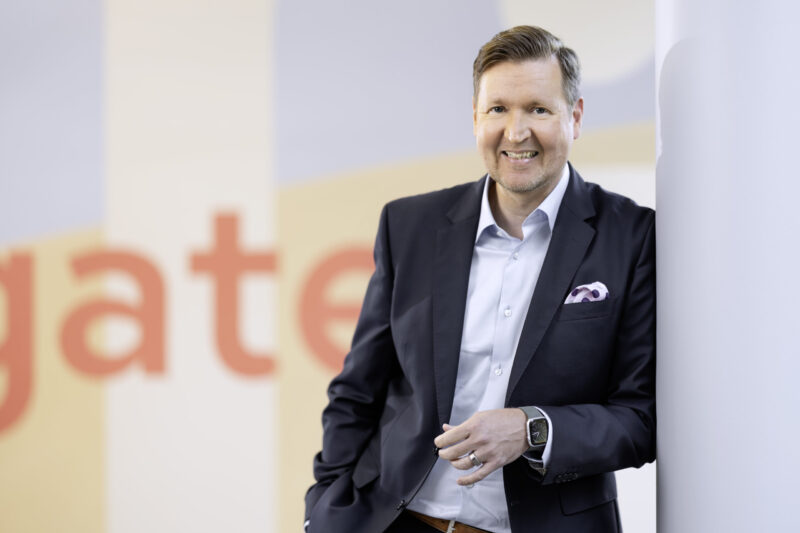Leader, dare to aim for the Moon on your AI journey – the biggest risk is staying on the sidelines
“There are costs and risks to a program of action, but they are far less than the long-range risks and costs of comfortable inaction.”
This is how John F. Kennedy called all Americans in the spring of 1961 to embark on a journey of bold reform. He warned that even though inaction might feel comfortable now, eventually it could be the most dangerous choice of all.
Just weeks later, Kennedy embodied this very courage by setting a clear and audacious goal: the United States would send the first human to the Moon before the decade was out. It wasn’t a decision made because it was easy, but because falling behind was not an option.
I’ve been a space geek since childhood, but Kennedy’s quote has popped in my head often lately, especially when I think about AI. In my work, I get to advise and follow closely how AI transformation is unfolding in different organisations. Even though organisations recognise the transformative potential of AI, progress on this field is still surprisingly cautious.
Or how does this sound to you: our recent market study shows that 74% of organisations believe AI will enhance productivity within the next couple of years. Yet only 6% have successfully transformed their business with AI.
Kennedy’s words remind us that sometimes we must dare to take risks and do something unprecedented. It may feel tempting to stay safe on the sidelines, but the long-term risks and costs of inaction are significant.
Individual wins aren’t enough for a true productivity leap
We’re seeing plenty of AI experiments: pilot projects that solve a singular problem but don’t address the big picture, tools that assist in day-to-day tasks, small pinpoint efficiency gains here and there. But so far, we mainly see benefits only in improving individual productivity.
Individual development and growth is a necessary springboard when we’re aiming for a real leap in productivity with AI, but it’s not nearly enough. Giving employees a few smart tools to ease their daily workloads is a far cry from transforming an entire business. No leader should settle for this and congratulate themselves prematurely for having AI “under way.”
I won’t pretend that bold visioning is easy. In the midst of a rapid change, it means imagining something that doesn’t exist yet. It means envisioning a completely new reality and understanding how it differs from our current, familiar work environment.
Still, this is exactly the moment to dare to step into the hard stuff. Embracing transformation is a leap into the unknown, but staying safely on the sidelines is an even bigger risk.
The obstacles are not technological
So what’s preventing organisations from seizing opportunities? It’s certainly not the maturity of the technology. When tech companies in Silicon Valley invest billions in developing AI solutions, we can be sure that it works for us too. The real question is: how do we start to benefit from all the possibilities technology already offers us? Our research shows it’s much more a question of leadership and mindset than it is of technology.
Many organisations see their legacy systems as a blocker. How to implement new AI solutions on top of existing infrastructure? A common assumption is that before we even start thinking about building something new, we have to modernise our entire existing tech stack. But what if we just don’t?
Sometimes, the fastest way forward is simply to sidestep obstacles. Which is what one construction company did: they decided to create new AI based workflows from scratch and only then they figured out a way to connect them to existing systems. It took courage, but it also freed them from the weight of outdated structures. Once the focus shifted from the rear-view mirror to the road ahead, people across the organisation began to see possibilities instead of obstacles.
People must be part of the transformation
A much bigger issue than tech readiness, is making sure we embrace leadership in the era of AI. AI is fundamentally changing the way we work, and no transformation happens without people. What organisations need now is a major cultural revolution: not just new tools, but new roles, new skills, and new ways of thinking.
People must be part of the journey. This means training, transparency, time to learn, and meaningful involvement. Most of all, it requires strong leadership to make the change something everyone can be a part of.
Yes, all of this requires investment, which might seem costly. But ask yourself: how expensive will it be if you don’t include your people?
Recognise what doesn’t change
AI transformation brings up a range of emotions, and it’s no surprise that some of them show up as resistance to change. I remember a client’s team commenting: “Here we are, training the machine to do our jobs.” But attitudes changed once they realised, that AI was actually freeing up their time for more meaningful work.
In the middle of all this change, a good leader creates stability and helps people see what doesn’t change. It is important to help people see that the arrival of AI doesn’t erase the organisation’s purpose. The core goal remains the same: to create value for our customers. How you deliver that value may change a lot, but why you do it does not.
A great example comes to mind: a dental chain developed AI to analyse their patients’ x-rays. At first, the benefit seemed insignificant, just a 30-second time-saver for the dentist. But after a while they redesigned their entire care process: patients saw a hygienist first and AI assessed if a dentist was even needed. The value, oral health, remained unchanged but was delivered more efficiently. And redefining the process created new business opportunities.
What would our business look like if we built it from scratch?
Our market study found that most organisations are still experimenting within old frameworks: optimising customer service, automating back-office routines, improving production efficiency. These are all useful, but they won’t get you far.
AI doesn’t bring about a productivity leap when it’s confined to one function or task. Change doesn’t start with algorithms, it starts with value streams, with how we lead the collaboration across all functions that create value for the customer.
So here’s a challenge for all leadership teams: if you started building your business from scratch today, in the era of AI, what would it look like? What would be a better way to create the value your customers expect?
Since we began with one great historical figure it’s only fitting to end with a another. Einstein once said: “The definition of insanity is doing the same thing over and over again and expecting different results.”
Many organisations have been experimenting with AI for the past couple of years. If the results from these pilot projects have been moderate, does it make sense to keep doing more of the same and expect a different outcome? Or is it finally time to shift gears and boldly aim for the Moon?
Download our free market study report on AI and the productivity leap.
About the author
Lassi Kurkijärvi has been building digital business for three decades. Today, he helps Nordic companies navigate digital transformation in his role as Executive CTO at Sofigate. His passion is humanity in all its forms: change is ignited or extinguished by whether people are inspired and engaged by it. Ultimately, everything new should serve a better and more sustainable life.


